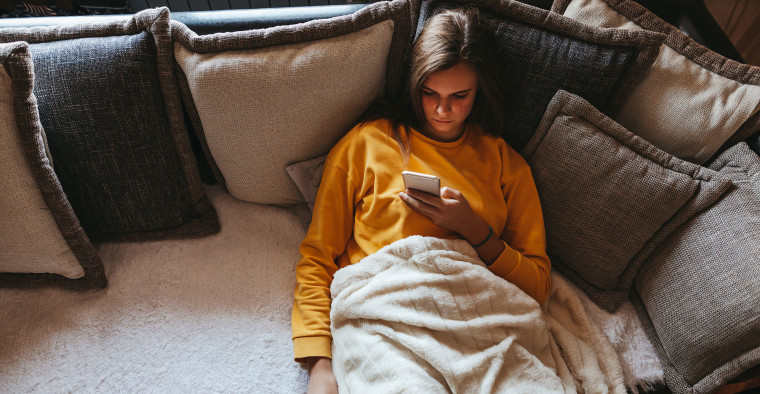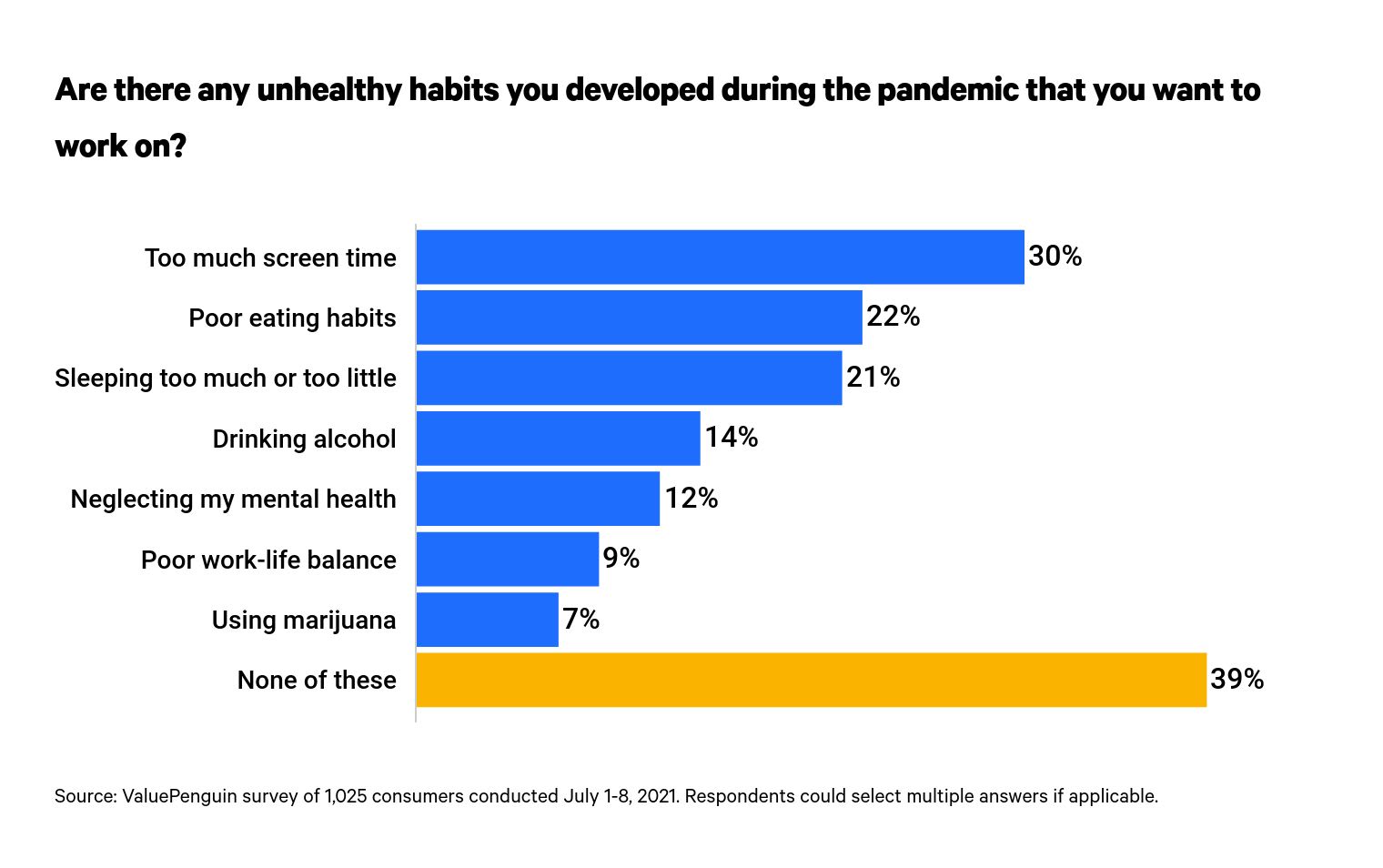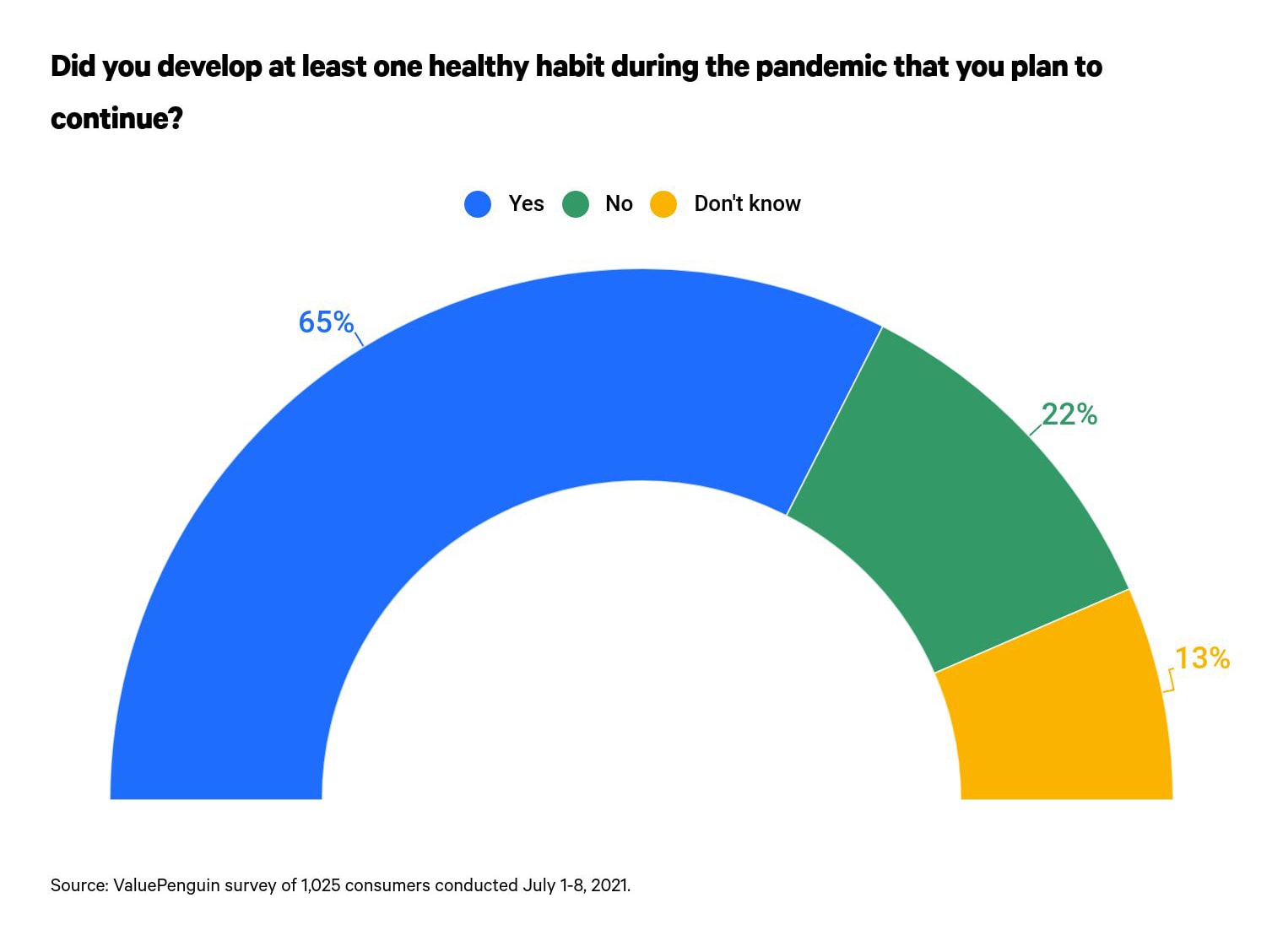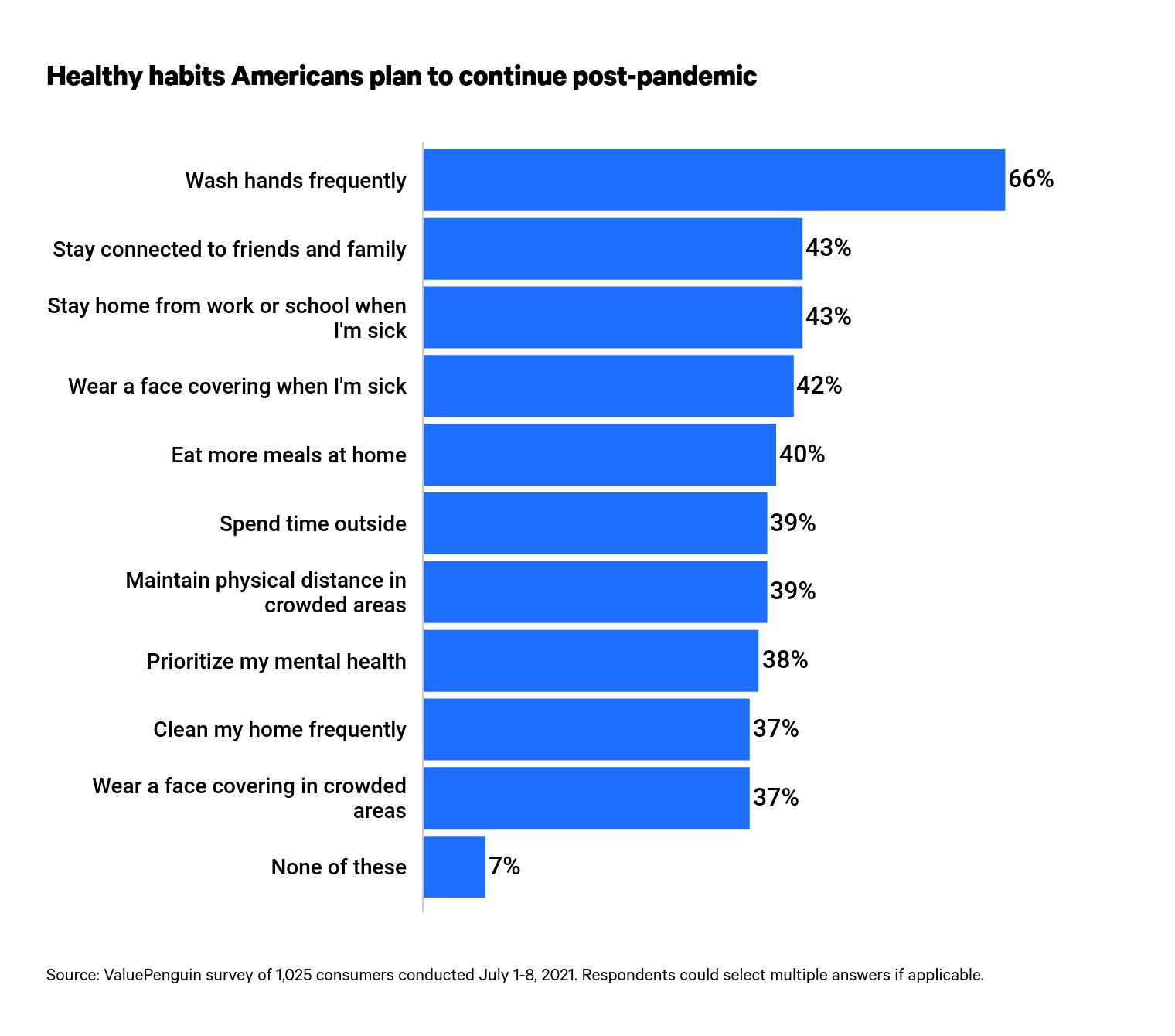Health Insurance
61% of Americans Trying to Break Unhealthy Pandemic Habits

During stressful times, people tend to pick up habits to help them cope with difficult situations and emotions. The coronavirus pandemic is no exception to this rule. As the pandemic appears to be winding down, people are starting to assess the new habits they developed to figure out whether to keep or break them.
If you formed new habits during the pandemic that you want to break, you’re not alone. More than 6 in 10 Americans developed unhealthy habits during the pandemic that they want to work on, according to the latest ValuePenguin survey of more than 1,000 consumers.
One of the biggest roadblocks to breaking bad habits can be consistency — or a lack thereof. This may be especially true in light of the unpredictable whirlwind of events around the globe since the early 2020 outbreak.
Key findings
- 61% of Americans are trying to break unhealthy habits developed during the coronavirus pandemic. Namely, 30% cite too much screen time, 22% cite poor eating habits and 21% cite sleeping too much or too little.
- Gen Zers and millennials are most impacted by unhealthy pandemic habits, especially related to work-life balance and substance abuse. 22% of Gen Zers cite poor work-life balance, while 20% of millennials cite alcohol struggles.
- The good news is about two-thirds of Americans (65%) developed a healthy pandemic habit that they plan to continue. The most common habits consumers will continue are frequent hand-washing, staying connected with loved ones and remaining home when sick.
- One habit that won’t stick: Less than half of Americans will wear face coverings post-pandemic, even while sick. In fact, 58% won’t wear a face covering while sick and 63% won’t in crowded areas.
- The usage of hand sanitizer and cleaning agents — like disinfectant wipes — remains high. 52% of Americans are using hand sanitizer even more than they were a year ago, and 47% say the same about cleaning agents.
The unhealthy habits developed by Americans during the coronavirus pandemic
Forming new habits or breaking old ones takes time. According to a study published in the British Journal of General Practice, it can take around 10 weeks for a new habit to become automatic. As you work to break unhealthy habits, it’s normal to experience an internal back-and-forth pull between what your brain is used to and the change you want to produce.
ValuePenguin asked respondents to identify the unhealthy habits they developed during the pandemic that they want to improve. Their responses were enlightening and might match with some of the habits you wish to change in your life.

Excessive screen time, poor eating habits and poor sleeping habits are the biggest offenders that respondents want to overcome. After that, a significant number of people also struggle with consuming alcohol, neglecting mental health, and not balancing their professional and personal lives.
Too much screen time is the most common bad habit that both men and women want to curb. Meanwhile, women wish to address new unhealthy eating habits at nearly twice the rate of men — 28% versus 15%.
Drinking alcohol is the only unhealthy habit that men identify as an issue more than women (15% of men versus 14% of women). That being said, the percentage of men who want to curb marijuana usage habits (6%) falls close to the rate of women who feel the same (7%).
Breaking bad habits may be especially beneficial in areas where your overall health could be affected. Excessive drinking and drug usage are two examples of habits with the potential to harm your health.
Gen Zers struggle the most with work-life balance, while millennials want to work on their alcohol consumption
Age appears to influence the habits people struggle with the most. For example, millennials (ages 25 to 40) are more concerned about alcohol consumption habits than any other group. By comparison, Gen Zers (ages 18 to 24) are most likely to identify a poor work-life balance as an area that needs improvement.
Millennials or Gen Zers are the most concerned about breaking bad habits in every area examined. So it seems these age groups either have more bad habits than the other generations or are more willing to acknowledge and improve the unhealthy habits they have. Fifty-nine percent of baby boomers (ages 56 to 75), meanwhile, identify no new bad habits picked up during the pandemic that they need to tame.
Here’s a look at the generation that’s the most concerned with each bad habit examined:
- Spending too much time on screens: Millennials (39%)
- Sleeping too much or too little: Gen Zers (32%)
- Eating poorly: Gen Zers (29%)
- Not handling work-life balance well: Gen Zers (22%)
- Drinking alcohol: Millennials (20%)
- Neglecting mental health: Millennials (17%)
- Using marijuana: Gen Zers (12%)
Americans also developed healthy habits they plan to keep
If anything positive comes out of the pandemic, it might be that many Americans created new healthy habits. Nearly two-thirds of survey respondents identify at least one healthy habit that they intend to continue after the pandemic ends.

Most people across age groups say they’ve picked up some good habits during the pandemic, but millennials lead the pack at 72%.
Most of the changes our respondents acknowledge present an opportunity to improve their physical, mental or financial health. The image below shows a breakdown of the specific habits Americans want to continue after the pandemic is over.

Women are more likely than men to intend to continue each good pandemic habit asked about in the survey. And except for spending time outside and staying connected to friends and family, parents of children younger than 18 are more likely to intend to continue good pandemic habits than adults with no children or those with children older than 18.
On another note, some people (though not a majority) do intend to stay home from work or school when they’re feeling sick in the future. Here’s how that breaks down by annual household income.
Staying home when sick
Annual household income | Percentage who plan to remain home when sick |
|---|---|
| Less than $35,000 | 42% |
| $35,000 to $49,999 | 46% |
| $50,000 to $74,999 | 40% |
| $75,000 to $99,999 | 46% |
| $100,000 and up | 43% |
How Americans plan to wear face coverings going forward
Despite the protections they offer, face coverings won’t be on the minds of most Americans after the pandemic ends. Even when feeling sick or visiting crowded areas, most people say they’ll opt to skip face masks in public places.
Here’s a look at where different genders, age groups and political parties stand on the subject.
Some key points you may notice include:
- Women (47%) are more likely than men (37%) to continue masking up when sick.
- Millennials are likely to wear a face covering. In fact, 50% will use a mask when sick and 42% will do so in busy locations.
- Baby boomers are the group most likely to wear masks less, as only 30% say they’ll use a face covering when feeling unwell.
- There’s a political difference on face coverings: 55% of Democrats will continue wearing a face covering when sick, versus 40% of independents and 28% of Republicans.
How to keep good habits post-pandemic
There are two good habits that many Americans established during the pandemic. Regarding hand sanitizer usage, 52% of respondents say they’re using the product more this year than last year. On a similar note, 47% are using cleaning agents such as disinfectant wipes or sprays more frequently now than they were a year ago.
If you have a goal of carrying some of your new good habits with you into the future, here are four ideas that might help you succeed.
- Be consistent: Creating a schedule around a new habit, especially a healthy one, can reinforce that action quickly. Suppose you can repeat your new habit around the same time each day (like exercising or cooking dinner at home instead of ordering out). In that case, the added consistency might eventually help you make your new habit automatic.
- Go outside and get out of the house: Being outdoors can be good for your mental and physical health. According to Harvard Health Publishing, getting outside may help increase your vitamin D levels, give you more opportunities to exercise, boost your mood, improve your concentration and help you heal faster.
- Find time for your loved ones: Another way to improve your mental health is to spend time with your tribe. According to the Mayo Clinic, making time for companionship with friends can reduce stress, make you happier, boost your self-confidence and help you break bad habits (or avoid them in the first place).
-
Prioritize your health: Taking care of your physical and mental health could make it easier to break up with the bad habits you’re using to cope with stress or pain. If you don’t already have a health insurance plan in place, you may want to start by reviewing your options. Once you have affordable coverage in place, you may feel more empowered to seek professional guidance from qualified physicians and mental health providers.
Methodology
ValuePenguin commissioned Qualtrics to conduct an online survey of 1,025 U.S. consumers from July 1 to July 8, 2021. The survey was administered using a nonprobability-based sample, and quotas were used to ensure the sample base represented the overall population. All responses were reviewed by researchers for quality control.
We defined generations as the following ages in 2021:
- Generation Z: 18 to 24
- Millennial: 25 to 40
- Generation X: 41 to 55
- Baby boomer: 56 to 75
While the survey also included consumers from the silent generation (defined as those 76 and older), the sample size was too small to include findings related to that group in the generational breakdowns.
